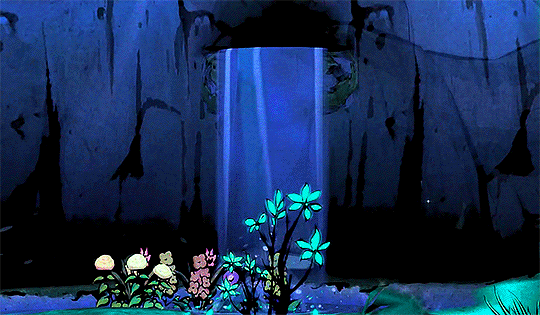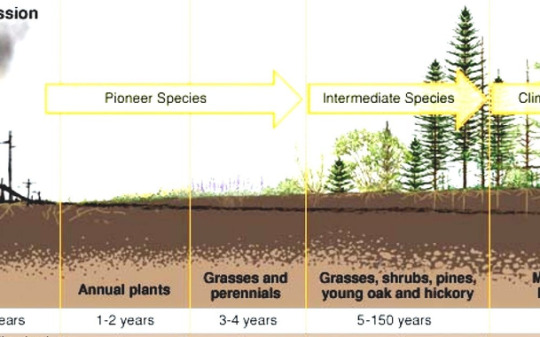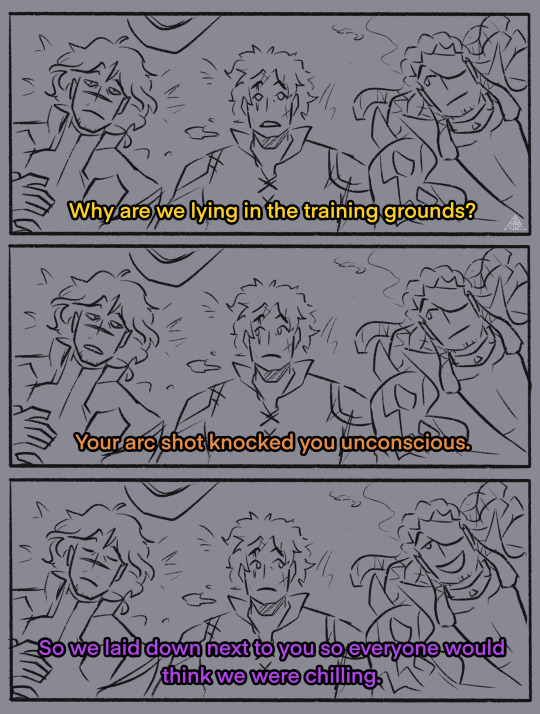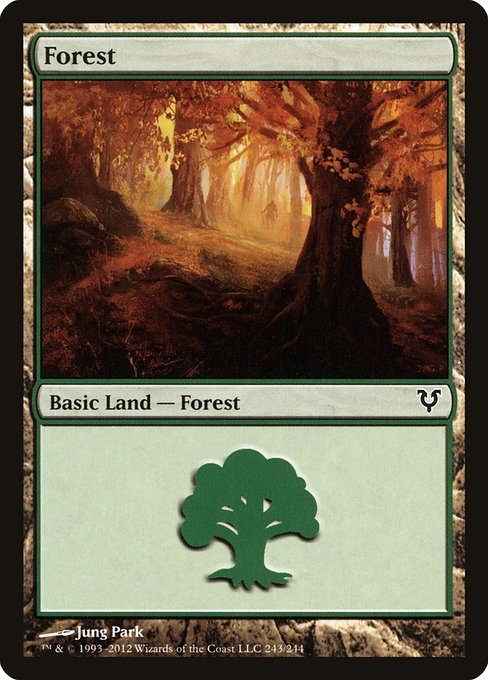#forest restoration
Link
“How do you supercharge vegetation growth for a reforestation project? Bring in the microorganisms.
That’s the finding from a new study, which shows that incorporating a microbial community of fungi, bacteria, algae and archaea into ecosystem restoration can accelerate plant biomass production by 64% on average.
Researchers say this application holds plenty of promise for restoration work in Southeast Asia, where large swaths of once-forested landscapes have been degraded for large-scale agriculture.
Soil microbiome like fungi carry out a critical task known as soil transplant, moving soil and associated microbial communities from one location to another. But they’re often overlooked in conservation and restoration efforts, said study lead author Colin Averill, a senior microbial and ecosystem scientist at the Swiss Federal Institute of Technology, or ETH Zürich.
“When we think to plant a tree, we never think to ‘plant’ the microbiome, right? But what if we did?” Averill told Mongabay.
To find out how big a role the microbiome plays in ecosystem restoration, Averill and colleagues from ETH Zürich, the Czech Academy of Sciences in Prague and Vrije Universiteit in the Netherlands pored over the date from 27 restoration projects that incorporated microbial restoration.
Their study, published in the journal Nature Microbiology, found that across all the restoration works, there was an average of 64% increase of plant growth. In one case, plant growth was stimulated by 700%.
The study shows that incorporating the microbiome in managed landscapes like farmland and forestry concessions has the greatest potential. This is because managed landscapes account for the majority of human land use, covering half of the global habitable land surface.
But by introducing microbial communities, these agricultural and forestry plantations [and monocultures] that are currently devoid of biodiversity could become reservoirs of it, Averill said.
To increase biodiversity and enrich these managed landscapes, it’s important to avoid using single species or very low-diversity, non-native soil organisms at a large scale, Averill said.
The study notes an increasing number of microbial inoculant companies advocating for just this on the argument that it could improve crop yields. But the mass application of a single species could lead to a loss of genetic and ecological diversity, and is unlikely to account for ecosystem-specific requirements, the study says.
It instead recommends using locally sourced, native and biodiverse communities of soil organisms as these can promote biodiversity in managed landscapes without limiting crop yields.” -via Mongabay, 1/5/23
#mongabay#mongabay environmental news#environmental news#conservation news#fungi#microbiome#monoculture#agriculture#reforestation#forest restoration#southeast asia#good news#hope#microorganisms
178 notes
·
View notes
Text
Yall dont understand how much i missed the forest. And i mean a real forest, not the sterilized, neutered monoculture devoid of life and energy that they call forest in central europe.
Since we as humans are part of a larger community of living beings, we can sense the life around us on an intrinsic level. And we can sense its absence. And if you start to notice the life and energy around you, those sterilized environments feel like sensory deprivation, like wearing figurative earplugs.
It really hit home for me just now, how absolutely destroyed central europe is on an ecological level. Every new day, every new place i get to witness, just refirms this understanding. There is a desperate need for rewilding in this region, to allow natural communities to heal and restore diversity and variance and the chaos that is life on this planet.
But first and foremost there is a need to shift cultural values in the region, before any kind of rewilding can happen. A while back there was this viral post about a french couple demanding the culling of wolves after witnessing a wolf hunting in their backyard. What should be a rare and incredible experience, a privilege and a pleasure to see (and an indicator that the natural communities of the alps have the potential to revive) - to them was a nuciance and a threat to their orderly idyllic cottagecore fsntasy world. It's like their whole culture never moved past the middle ages mentality of achieving safety by "taming" the wild places.
And i've genuinely had (frustrating) conversations with forestry and conservation students from central europe who are literally Afraid of natural forests. Theyre "too wild" and chaotic, lacking the order and control theyre accustomed to in all other parts of their country's society, and require intensive management to bring it to submission and be a "propper" forest. In their eyes, the forest is a resource only growing timber and looking like a city park for them to walk through. Anything that makes obtaining wood more difficult or less profitable is a Problem and needs to be fixed. They dont have any pespective on what an actual natural forest looks and feels like, and look at you like youre an alien if you say what they have arent real forests.
It shows that cultural values in this part of the world stand in direct opposition to the principles of rewilding and re-estsblishing harmony with our place the larger biological community.
So before any large scale restoration can be considered, before actual nature can be brought back to central europe, as desperately as it is needed - not just for its own intrinsic value and right to exist, but also for resillience in the face of the climate crisis - there needs to be a cultural shift that will tolerate coexistence with things that live for their own sake rather than direct human benefit, and which cannot and will not be fundamentally changed to their liking.
And therein lies the crux of this ideology: the rejection of anything that is different from them and will not be subjugated. The need to homogenize everything in their own image. And this mindset is the nucleus at the heart of imperialism. Which is why you cannot separate nature conservation from the ongoing legacy of colonialism, even in the imperial core, and why decolonization needs to be the foundation for any kind of restoration effort.
Tldr: There can be no rewilding of central europe until there is decolonization of european mindsets.
#ecology#rewilding#forest restoration#not to sound too much like a hippy#but even on a purely logical scientific level#you can look at the forest and see the lack of diversity and life. the lack of spatial heterogeny and consequential lack of habitat niches#its structural and visual and audio indicators#on top of the fact that you can indeed feel the difference. if youre used to looking for it#central europe is so fucked#and every passing day cements this realization for me#as an ecologist i approve this post#my own post lol#and down the rabbit hole we go#but its all connected and i hsve no idea how to begin this shift in perspective#when most europeans i meet on the field. even students. refuse to even consider that their worldview isnt inherently superior#that perhaps they are not doing the best at literally everything. including nature management#only time will wear away this european exceptionalism#but europe does not have Time for them to realize this before europe becomes very difficult to sustain livelihoods in
5 notes
·
View notes
Quote
The Clean Cooking Alliance has advised more developing countries to put clean cooking in their climate-action plans and says investors and corporations should consider how the transition to cleaner cooking can make their investments less risky. "You can't tell people they can't use the natural resources around them to feed their families without providing an affordable alternative," Belopolsky said. "If we invest billions of dollars to protect or restore forests or implement regenerative agricultural practices, but communities that live around those projects don't have access to clean cooking and are collecting wood, that's counterproductive and a risk to that investment."
Catherine Boudreau, ‘'Clean cooking' can help protect forests and also combat climate change by reducing pressure on woodlands and cutting air pollution’, Business Insider
#Business Insider#Catherine Boudreau#Clean Cooking Alliance#clean cooking#natural resources#Jillene Connors Belopolsky#forest restoration#regenerative agricultural practices
3 notes
·
View notes
Text
Forests for Sustainable Land Restoration- UNCCD COP16 (UNFF16 Side Event).
The requested side event will share experience from Saudi Arabia on these major forestry initiatives for sustainable land restoration, and will help inform the forest restoration debate at UNCCD COP 16. In support of the global debate for land restoration, Saudi Arabia will host the 16th Conference of the Parties of the United Nations Convention to Combat Desertification (UNCCD COP 16) in Riyadh on 2-13 December 2024.
Watch Forests for Sustainable Land Restoration- UNCCD COP16 (UNFF16 Side Event)

#United Nations Convention to Combat Desertification#restoring forests#Forest restoration#land restoration#sustainable use#sustainable forest management#sustainable land management#cop16#UNCCD#Riyadh#saudiarbia#side-events#unff19
0 notes
Text
Legit though, we should start turning ecosystem restoration and work to make our world more tolerant to the effects of climate change into annual holidays and festivals
Like how just about every culture used to have festivals to celebrate the beginning of the harvest or its end, or the beginning of planting, or how whole communities used to host barn raisings and quilting bees - everyone coming together at once to turn the work of months or years into the work of a few days
Humble suggestions for festival types:
Goat festival
Besides controlled burns (which you can't do if there's too much dead brush), the fastest, most effective, and most cost-efficient way to clear brush before fire season - esp really heavy dead brush - is to just. Put a bunch of goats on your land for a few days!
Remember that Shark Tank competitor who wanted to start a goat rental company, and everyone was like wtf? There was even a whole John Oliver bit making fun of the idea? Well THAT JUST PROVES THEY'RE FROM NICE WET PLACES, because goat rental companies are totally a thing, and they're great.
So like. Why don't we have a weekend where everyone with goats just takes those goats to the nearest land that needs a ton of clearing? Public officials could put up maps of where on public lands grazing is needed, and where it definitely shouldn't happen. Farmers and people/groups with a lot of acres that need clearing can post Goat Requests.
Little kids can make goat-themed crafts and give the goats lots of pets or treats at the end of the day for doing such a good job. Volunteers can help wrangle things so goats don't get where they're not supposed to (and everyone fences off land nowadays anyway, mostly). And the goats, of course, would be in fucking banquet paradise.
Planting Festival and Harvest Festival
Why mess with success??? Bring these back where they've disappeared!!! Time to swarm the community gardens and help everyone near you with a farm make sure that all of their seeds are sown and none of the food goes to waste in the fields, decaying and unpicked.
And then set up distribution parts of the festival so all the extra food gets where it needs to be! Boxes of free lemons in front of your house because you have 80 goddamned lemons are great, but you know what else would be great? An organized effort to take that shit to food pantries (which SUPER rarely get fresh produce, because they can't hold anything perishable for long at all) and community/farmer's markets
Rain Capture Festival
The "water year" - how we track annual rainfall and precipitation - is offset from the regular calendar year because, like, that's just when water cycles through the ecosystems (e.g. meltwater). At least in the US, the water year is October 1st through September 30th of the next year, because October 1st is around when all the snowmelt from last year is gone, and a new cycle is starting as rain begins to fall again in earnest.
So why don't we all have a big barn raising equivalent every September to build rain capture infrastructure?
Team up with some neighbors to turn one of those little grass strips on the sidewalk into a rain-garden with fall-planting plants. Go down to your local church and help them install some gutters and rain barrels. Help deculvert rivers so they run through the dirt again, and make sure all the storm drains in your neighborhood are nice and clear.
Even better, all of this - ESPECIALLY the rain gardens - will also help a ton with flood control!
I'm so serious about how cool this could be, yall.
And people who can't or don't want to do physical stuff for any of these festivals could volunteer to watch children or cook food for the festival or whatever else might need to be done!
Parties afterward to celebrate all the good work done! Community building and direct local improvements to help protect ourselves from climate change!
The possibilities are literally endless, so not to sound like an influencer or some shit, but please DO comment or reply or put it in the notes if you have thoughts, esp on other things we could hold festivals like this for.
Canning festivals. "Dig your elderly neighbors out of the snow" festivals. Endangered species nesting count festival. Plant fruit trees on public land and parks festival. All of the things that I don't know anywhere near enough to think of. Especially in more niche or extreme ecosystems, there are so many possibilities that could do a lot of good
#climate change#climate action#climate crisis#climate hope#solarpunk#hopepunk#hope posting#community building#ecosystem#ecosystem restoration#forest fire#fire prevention#flood#flood prevention#harvest#harvest festival#regenerative agriculture#modern farming#water conservation#meteorology#festival#not news#hope#climate optimism
3K notes
·
View notes
Text





❀ agata forest restoration ❀
#okami#okamiedit#dailygaming#gamingedit#ps2#okami hd#gaming gif#2000s games#retro games#forests#nature#okami gif#agata forest#*agataforest#*restorations#mygifs#gifs#*
1K notes
·
View notes
Text

Sugarcane is a widely grown crop in the Nile Basin, but its destructive effects on soils, water resources and biodiversity have become increasingly apparent.
As the thirsty crop draws down water resources, aquatic species like the critically endangered Nubian flapshell turtle suffer a loss of habitat, forage and nesting sites.
In an effort to revive soils, diversify diets and incomes, and boost water levels that many animals rely on, communities are implementing agroforestry projects in lieu of monocultures.
The resulting “food forests” attract an array of wildlife while refilling wetlands and river systems where the culturally important flapshell turtles swim.
#good news#nile river#africa#kenya#nubian flapshell turtle#food forest#restoration#turtles#agroforestry#environmentalism#science#environment#nature#animals#conservation#sugarcane
561 notes
·
View notes
Text
The potential of newly created forests to draw down carbon is often overstated. They can be harmful to biodiversity. Above all, they are really damaging when used, as they often are, as avoidance offsets— “as an excuse to avoid cutting emissions,” Crowther said.
The popularity of planting new trees is a problem—at least partly—of Crowther’s own making. In 2019, his lab at ETH Zurich found that the Earth had room for an additional 1.2 trillion trees, which, the lab’s research suggested, could suck down as much as two-thirds of the carbon that humans have historically emitted into the atmosphere. “This highlights global tree restoration as our most effective climate change solution to date,” the study said. Crowther subsequently gave dozens of interviews to that effect.
This seemingly easy climate solution sparked a tree-planting craze by companies and leaders eager to burnish their green credentials without actually cutting their emissions, from Shell to Donald Trump. It also provoked a squall of criticism from scientists, who argued that the Crowther study had vastly overestimated the land suitable for forest restoration and the amount of carbon it could draw down. (The study authors later corrected the paper to say tree restoration was only “one of the most effective” solutions, and could suck down at most one-third of the atmospheric carbon, with large uncertainties.)
Crowther, who says his message was misinterpreted, put out a more nuanced paper last month, which shows that preserving existing forests can have a greater climate impact than planting trees. He then brought the results to COP28 to “kill greenwashing” of the kind that his previous study seemed to encourage—that is, using unreliable evidence on the benefits of planting trees as an excuse to keep on emitting carbon.
“Killing greenwashing doesn’t mean stop investing in nature,” he says. “It means doing it right. It means distributing wealth to the Indigenous populations and farmers and communities who are living with biodiversity.”
[...]
Crowther’s November study—with more than 200 scientists listed as coauthors—instead stresses the power of preserving intact woodlands. While restoring destroyed or fragmented forests would absorb a potential 87 gigatonnes of carbon, simply allowing existing forests to grow to maturity would absorb an additional 139 gigatonnes. These estimates exclude urban, farming, and grazing areas that may once have held forests but are unlikely to be given over to nature.
574 notes
·
View notes
Text
I wanted to make a post with some links to explain why afforestation (planting trees to stop desertification; the change of environments into deserts) is not always the best approach to take.
So lately on social media there's been a lot of misinformation of like tree planting = always good. But the problem with this approach/view is it gives companies and governments the excuse to use forest monocultures (millions of one or few tree species) to fund logging industries instead of taking the time to develop an ecosystem of native plants.
(Link to real life example:)
youtube
Ecosystems undergo ecological succession where bare land is converted to ecologically productive (lots of different organisms with different roles in the ecosystem, nutritious soil) and biodiverse (lots of different species) land. It also takes a long time for this to happen.
See these:
youtube

Here's some links a video explaining why just planting trees ultimately doesn't work in the long term if done wrong:
youtube
And here's some links to videos explaining how it can be done right when we actually look at the evolutionary history of the ecosystem and ecology of it and restore it using native species and less rigid attitudes.
youtube
youtube
youtube
youtube
youtube
Habitat restoration is a HUGE branch of conservation biology and is constantly causing disagreements in scientific communities because its a new science and there are so many different branches of biology (e.g. ecology, evolutionary history and ecology, geology, etc) we need to consider and so many old attitudes that need revising in some conservation techniques.
This is only a guide to trees alone in habitat conservation as well, there are so many different habitats other than forest that need to be conserved as well as forests, particularly wetlands which are so abundant in biodiversity and ecosystem services (things ecosystems can do for the world essentially, unfortunately the focus in research can be on what ecosystems can do for us).
I've also not looked much at how this has been done outside of official organisations and I wanna look more at conservation projects ran illegally but I'm bad at finding information lol
#wow i expressed an opinion online without panicking#now to bury my head in the sand if i get criticised#ecology#trees#tree ecology#conservation biology#habitat restoration#rewilding#wildlife#tree conservation#evolutionary ecology#mosscore#forestcore#forests#Youtube
2K notes
·
View notes
Text

896 notes
·
View notes
Text
So on the surface this looks like a good thing. After all, we need mature and old-growth forests as they're havens for species dependent on that habitat type, and they are also exceptionally good carbon sinks compared to younger, less complex forests. (A big, old tree will still absorb and hold more carbon than a new, quick-growing one, and in fact for the first twenty or so years of its life a tree is actually carbon positive, releasing more than it absorbs.)
However, timber industries are trying to paint mature forests as fire hazards that need to be thinned out due to an abundance of plant life. They also tend to oppose leaving snags and nurse logs in the forest as "fuel", because they'd rather salvage what lumber they can from a freshly dead tree. So of course they're trying to push for cutting down trees as the solution to climate change's threat to mature forests.
Large, old trees are generally better adapted to surviving a fire simply by sheer size. Some have other adaptations, such as deeply grooved bark that can create relatively cooler pockets of air around the tree to help it survive, and the branches of older, taller trees of some species are higher up the trunk, away from lower-burning fires. And those old trees that survive are often important for helping to restore the forest ecosystem afterward, from providing seeds for new trees to offering wildlife safe haven and food.
When timber companies come in and log a forest, even if they don't take all the trees, they leave behind all the branches and twigs and just take the trunks. This creates a buildup of fine fuels that burn very quickly (think the twigs and paper you use to start a campfire), while removing coarse fuels that take longer to catch fire. In fact, an area that is subjected to salvage logging after a fire is much more likely to burn again within a few years due to all the fine fuels left behind by salvage logging.
Another factor is that not all forests are the same, even at similar ages. Here in the Pacific Northwest, as one example, the forests east of the Cascades live in drier conditions with slower plant growth, and low-level wildfires that can clean out ladder fuels before they pile up too high are more common. In those locations prescribed burns make sense.
However, the fire ecology of forests on the west side is less understood; because lightning storms are less common and the climate is wetter, fires just don't happen as often. And west-side forests are simply more productive, with denser vegetation that grows back quickly after even large fires like 2017's Eagle Creek Fire in the Columbia River Gorge. Historically speaking, west-side forests get fewer, but larger, fires. So the prescribed burns and other strategies employed for east-side forests aren't necessarily a good fit.
Finally, mature forests are much more biodiverse, and support many more species than a monocultural tree plantation. As climate change continues to affect the planet, mature forests and other complex ecosystems are going to become increasingly crucial to protecting numerous species, to include those dependent only on those ecosystem types. Thinning may seem like a great idea at first, but even if it isn't as destructive as clearcutting it will still damage a forest in ways that will take years to restore.
We really need to be wary of the narrative that thinning is the only way to curb climate change's effects on mature forests. It's a more complex situation than that, and we need to prioritize preserving these increasingly rare places as much as possible.
#wildfire#forest fire#forest fires#fire#forests#old growth forest#old growth forests#ecology#restoration ecology#logging#conservation#environment#scicomm#science communication#science#nature#plants#trees#climate change#global warming
397 notes
·
View notes
Text
The adaptations of/canonical stories of games with multiple playable protagonists should focus on both. I adore Yokai Watch but the anime did Katie so fucking dirty and, by proxy, her and Nate's friendship. In the games, they feel like genuine friends who run in the same circle. But not in the anime, and I'm upset because they totally could've had them BOTH be the protagonists who are given watches and made to interact with the world and each other in a unique way to the games but instead Katie's just this girl Nate has a crush on with a tiring joke about him being average. They don't even feel like friends in the show, it feels like they have mutual friends in Bear and Eddie and that's how they run in the same circles. Boo.
#and then when they're memories are restored in YW2 they could run over and be like “dude!!” “DUDE!!”#and then find out their grandparents were friends or smth#maybe one is the friend who the other let down#yokai watch#granted I'm not caught up on the anime. i stopped watching and then saw the (fucking awesome) movie#yokai watch 2#jibanyan#is it clear i have AU ideas#whisper yokai watch#nate adams#katie forester#komasan#this goes for pokemon too. every adaptation of the first game strays red further and further from blue and leaf#who should be his best friends#like you could have the sun/moon protags be siblings. or may goes for team aqua while Brendan goes for magma#you get the idea#pokemon#pokemon red and blue#pokemon leaf#⚠️POKEMON STUFF IS DOWN HERE FOR ANYONE CONFUSED#red leaf and blue should be besties. I'm right and you know it#yokai watch au#and i mean really not caught up. i only watched when it came on tv and i haven't watched tv properly in years#outside of what roommates/family/friends are watching
84 notes
·
View notes
Text













MHW sketchdump feat. some friends' OCs
(Tyrann becomes an Ecologist at some point!)
#mhw#monster hunter world#monster hunter#chief botanist#sketch#tyrann#other people's ocs#rev#duke#man loves his jagras both great and small#i think he slowed his hunts down after blackveil val'hazaak and helped restore things after the nasty destruction in the ancient forest#im def putting him back in wilds tho ghfjhg#i think he'd love to see the world and draw more wyverns#oc#original character
40 notes
·
View notes
Text

Blue Mountain Lake, NJ - May 26th 2024
#nature#photographers on tumblr#original photography#forest#new jersey#njlocal#spring#delaware water gap#this is apparently a national park now...already dislike the new changes....#almost got hit by a car because they are attempting to restore the abandoned highway on weekends
16 notes
·
View notes
Photo

Forest
Artist: Jung Park
TCG Player Link
Scryfall Link
EDHREC Link
34 notes
·
View notes

